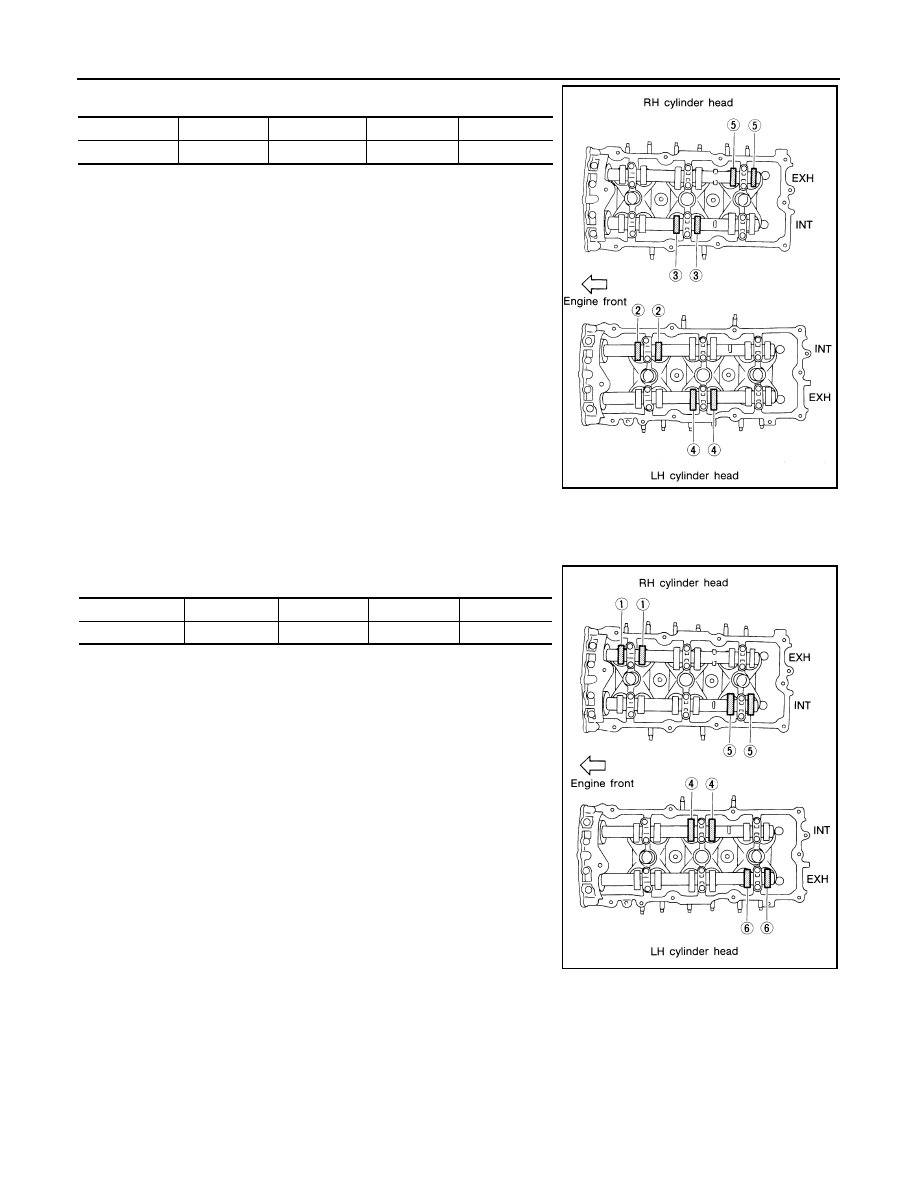Nissan Maxima. Manual - part 533

EM-20
< PERIODIC MAINTENANCE >
CAMSHAFT VALVE CLEARANCE
9. Check only those valve lifters as shown.
10. Turn the crankshaft 240
°.
11. Set No.5 cylinder at TDC on its compression stroke.
12. Check only those valve lifters as shown.
13. If all valve lifter clearances are within specification, install the following components. If the valve lifter
clearances are out of specification, adjust the valve lifter clearances.
• Intake manifold collectors
• Rocker covers
• All spark plugs
• All ignition coils
VALVE LIFTER ADJUSTING
Crank Position
Valve No. 2
Valve No. 3
Valve No. 4
Valve No. 5
No. 3 TDC
Intake
Intake
Exhaust
Exhaust
SEM894E
Crank Position
Valve No. 1
Valve No. 4
Valve No. 5
Valve No. 6
No. 5 TDC
Exhaust
Intake
Intake
Exhaust
SEM958E